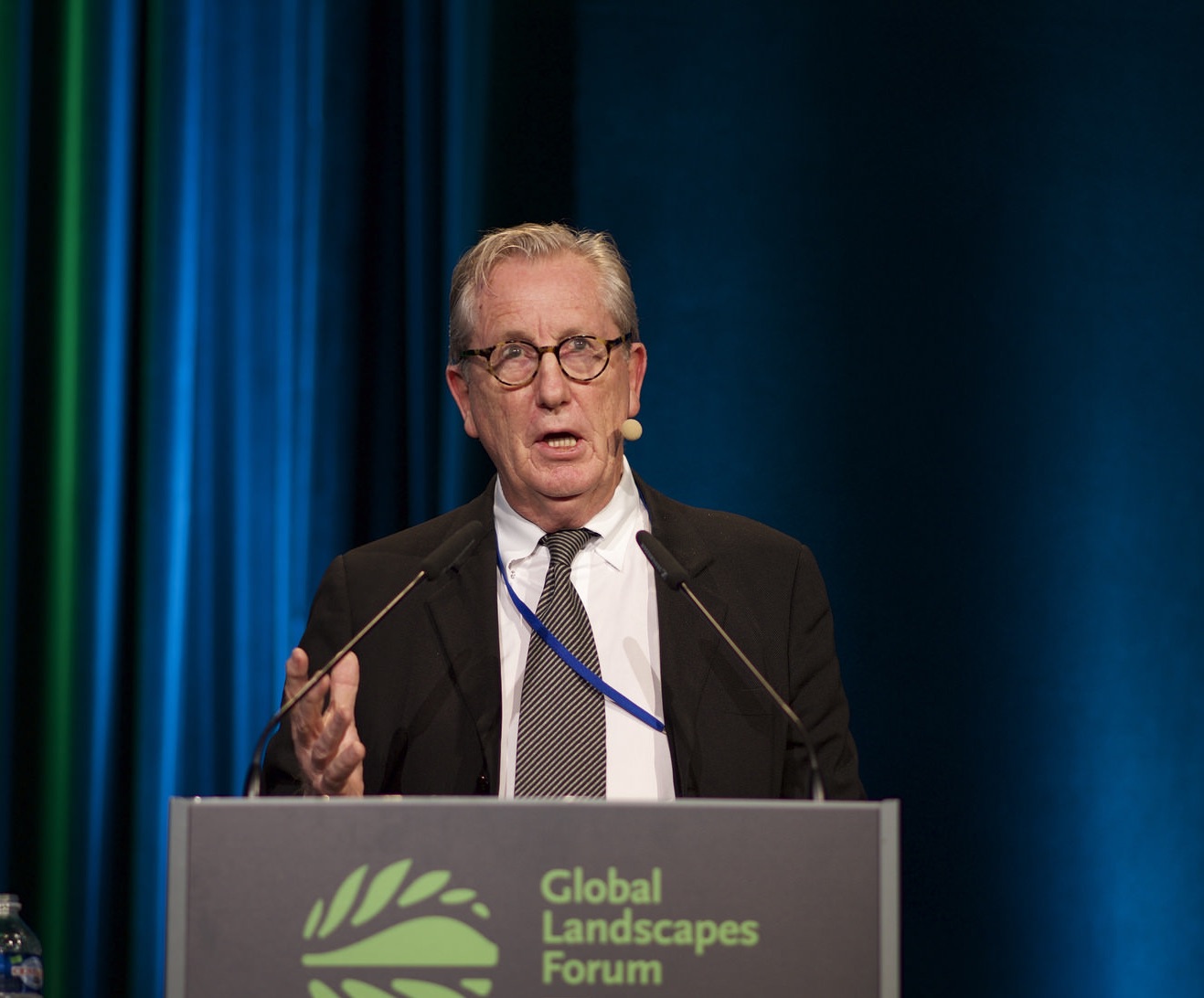This article is Part 3 of a four-part series of video interviews held on the sidelines of the Global Landscapes Forum 2016 – The Investment Case. The aim of this one-day experts symposium was to accelerate investment in landscapes.
A Q&A with Andrea Ledward, Head of the Climate and Environment Department at the UK Department for International Development (DFID), and Board Member at the Green Climate Fund.
What does climate finance look like today?
Well, the Paris Agreement last year really set a new playing field for us all. It really set out the level of ambition to mobilize the hundred billion dollars by 2020, but also indicated how much further we have to go.
Climate finance flows in 2014 were 64 billion. So the gap is then 36 billion between getting from where we were in 2014 to 2020.
If we really want to be serious about addressing climate change ... we have to be doing it through land and forestry.
How can the public sector encourage private investment?
So I guess there’s three important themes that I would focus on. The first one is the importance of helping to value natural resources and sustainability, so to put a value on the natural capital. So really working closely with communities to understand what they need and what they value, working with governments, and then helping make sure that we have the policy and the regulatory frameworks in place in order to show that those natural resources are valued.
The second one then is understanding the terms and the risk appetite for large funds like the Green Climate Fund, but also for donors. And thinking about what that risk appetite is that’s going to not over-subsidize the markets.
And then the third one is that governments have a very important role in having a long-term strategic vision. And having a sense [of] where we want to be by 2020, by 2030 and beyond. And having that in sight. And the Paris [Agreement] is very helpful for that, as are the Global Goals that were also agreed last year.
What is the Green Climate Fund?
The Green Climate Fund is really the international organization that’s to make climate finance flow at scale. But it’s also an organization that importantly places country ownership right at the heart of the institution. So it’s also then about strengthening national capability and capacity to plan for the future, their vulnerabilities, plus a low-carbon future.
And it’s a really an innovative institution that is really trying to help with this paradigm shift that was set out and agreed at Paris. What that means is it has a private sector facility that other funds did not have and do not have really operating at scale. It has a gender policy, for example, right from the very establishment to show the way in which women’s and girls’ roles are very central to achieving long-term change. It also has a very strong results framework and investment framework that again is trying to lock in to the policy and investment framework of this new paradigm.
Why is gender an issue?
So I think that just experience to date shows that if you don’t involve women, whether it’s at a household level, or community level, or at a project level, the projects are just not as viable and as sustainable, because often it’s women making those individual decisions about access to resources and controlling those resources in a way that’s sometimes invisible. But also women stand to gain an awful lot as agents of change.
What are the challenges?
I think part of the challenge is turning the Nationally Determined Contributions that were all put forward at Paris into investable plans. And that’s quite a journey. And so there are lots of organizations around, there are lots of governments like the UK that are willing to partner with country governments and help them think about developing bankable projects. And there’s experience in the global environment facility and the climate investment funds about how to do that. But I think the Green Climate Fund just needs to mature a little bit and be able to articulate better as a board what we’re looking for, articulate better what the risk appetite is, and send clearer signals about what kind of projects we want to see coming through the board.
I mean, I have a huge amount of confidence that in 12 months’ time it will feel very different and the pipeline will look very different.
Why focus on landscapes?
If we really want to be serious about addressing climate change and we really want to be serious about mitigating the risks and supporting communities build their resilience, we have to be doing it through land and forestry.
We want you to share Forests News content, which is licensed under Creative Commons Attribution-NonCommercial-ShareAlike 4.0 International (CC BY-NC-SA 4.0). This means you are free to redistribute our material for non-commercial purposes. All we ask is that you give Forests News appropriate credit and link to the original Forests News content, indicate if changes were made, and distribute your contributions under the same Creative Commons license. You must notify Forests News if you repost, reprint or reuse our materials by contacting forestsnews@cifor-icraf.org.

